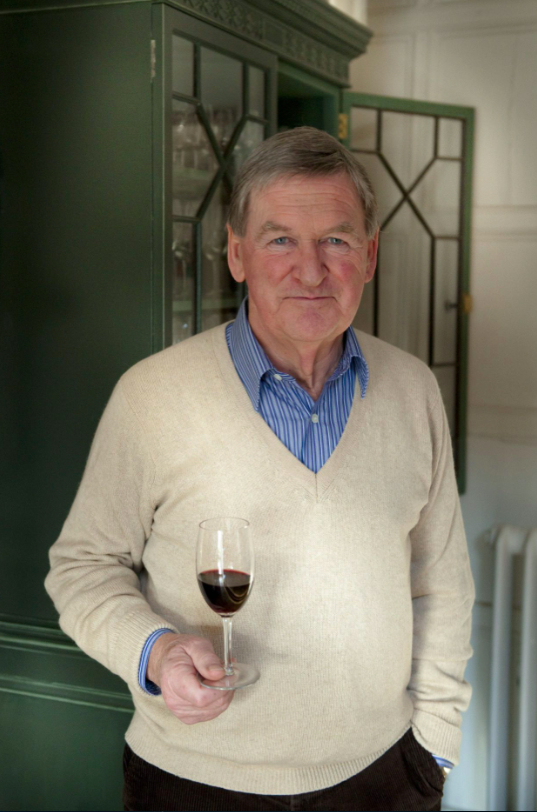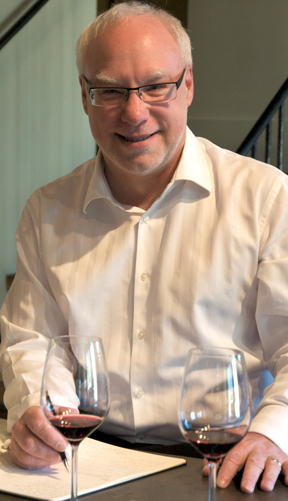
It’s the middle of harvest for Pacific Northwest winemakers, the same time of year that also delivers the latest edition of the handy and insightful Hugh Johnson’s 2015 Pocket Wine Book by the famed British author.
The 336-page guide expands its coverage of our corner of the wine world by nearly a full page. The six-page spread for Washington, Oregon and Idaho starts on page 260. A few pages later, British Columbia receives the balance of a page.
For many wine consumers, Johnson’s geeky guide commands interest and requires reading glasses. There’s an overwhelming wealth of information about many of the world’s top wines presented in a condensed format. Yet, it’s worth the eye strain.
He opens by citing a couple of astounding global statistics. There are more 20 million acres of vineyards, and as of 2010, wine production hit 34 billion bottles.
“That’s nearly five bottles for everyone on Earth,” Johnson wrote.
While Johnson offers his guide with the proviso that “Most (I can’t promise all) of the wines it describes are worth tasting, and may give you an enjoyable meal.”
British expert relies on 2 Northwest wine writers

In the case of the Pacific Northwest recommendations, the success rate should be close to 100 percent thanks to his continued choice of Portland-based journalist Cole Danehower and British Columbia critic Anthony Gismondi as his correspondents to our region. He hired 29 such collaborators for this his 38th edition.
One of the topics discussed in his opening agenda references the passion displayed by growers, winemakers and consumers to explore the world’s 1,400 grape varieties, which he refers to the “Age of the ampelographer.”
“We, the drinkers, gain an infinitely wider choice,” Johnson wrote. “We lose, on the other hand, the assurance of habit and familiarity. The familiar and the new are constantly in conflict.”
Hugh Johnson’s Pocket Wine Book helps the reader to confirm the familiar from their favorite producers, identify new wines and introduce new producers. And Johnson takes the opportunity to point out the hypocrisy of some calorie-counting consumers.
“I am always surprised when the same friends tuck gaily into wines heady with alcohol and thick with flavor,” Johnson wrote. “They are not applying the same standards to wine as to food.”
It’s not too ironic for Danehower to take that similar approach during his introduction to the Pacific Northwest.
“Those who find California’s wines a bit — shall we say — heavy, look for refreshment up here,” Danehower wrote.
Danehower also points to the recent acquisitions in the Northwest by large companies from outside the region, including California giants Gallo, Jackson and Duckhorn, by noting, “All this new investment should only boost the region’s appeal.”
6 Northwest wineries elevated to 4-star rating

The Pacific Northwest coverage opens with Oregon, where Beaux Frères, partially owned by famed critic Robert Parker, receives a four-star rating, joining the likes of Adelsheim, Domaine Drouhin and Ponzi. Two other younger cult producers — Evening Land and Soter — as well as historic The Eyrie Vineyards also were elevated to four-star status.
Renowned winemaker Laurent Montalieu, who is behind many brands in Oregon, had his Hyland Estate included for the 2015 edition and received three stars for his work, as did newcomer Teutonic Wine Co., described as a “brilliant up-and-comer.”
In Washington, Andrew Will, DeLille and Northstar each were elevated to four stars, joining the region’s elite with Betz, Cayuse, Chateau Ste. Michelle, L’Ecole, Leonetti, Long Shadows, Quilceda and Woodward Canyon.
Two wineries in Walla Walla involving Leonetti’s second-generation winemaker, Chris Figgins, cracked the three-star ranks — Doubleback (his collaboration with retired football star Drew Bledsoe) and his own Figgins. Hogue Cellars moves up from two to three stars, as does Maryhill.
Idaho’s Koenig Vineyards moves up to 3 stars

Idaho now has a pair of three-star wineries as Koenig, which overlooks the Snake River, joined Boise-based Cinder. It’s interesting that Gem State wineries now are included in alphabetical order among the Washington wineries.
In British Columbia, there was little change as three-star wineries Blue Mountain, CedarCreek, Mission Hill, Osoyoos Larose, Painted Rock, Road 13 and Tantalus continue to lead the way.
Danehower points out the urbanization of wine production, particularly in Portland and Seattle, citing Bow and Arrow, Southeast Wine Collective and Boedecker in the Rose City and listing Cloudlift, Falling Rain and Omnivore for the Emerald City. “In 2014, there were over 40 wineries in Portland and Seattle.”
Among the bits of Northwest wine trivia Danehower includes are:
• While there’s not much to worry about from Washington wines that emerge from the 2013 vintage, Oregon Pinot Noir “will be good, but very producer- and site-specific.”
• Average retail price of California wine is $6.13 per bottle. In Oregon, it’s $15.32.
• “New from Oregon: Pinot Noir in a can, to encourage ‘beerification’ of wine. Lovely.” It’s a jab at Union Wine Company’s new 375-milliilter program, which also includes Pinot Gris.
• About 47 percent of Oregon’s vineyards have received some form of sustainable certification, adding, “it’s not a marketing ploy.”
Hugh Johnson’s 2015 Pocket Wine Book, published by Mitchell Beazley/Octopus Books USA, retails for $17. It’s available as an eBook through Amazon.com and also an app from the Apple Store. The app version allows for sharing on social media.

Leave a Reply